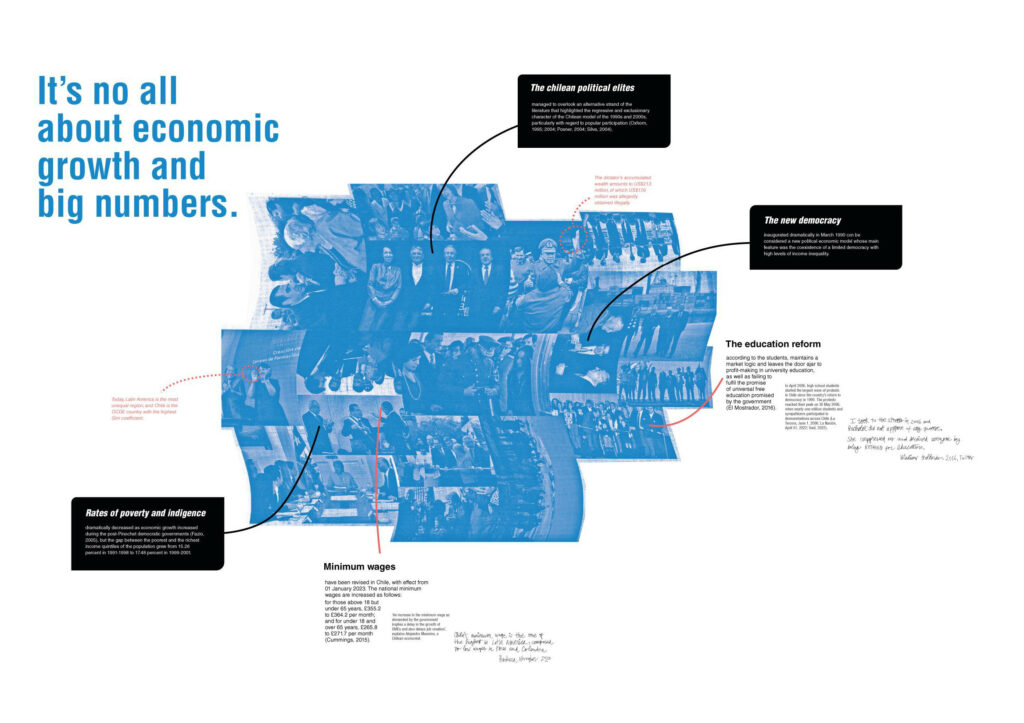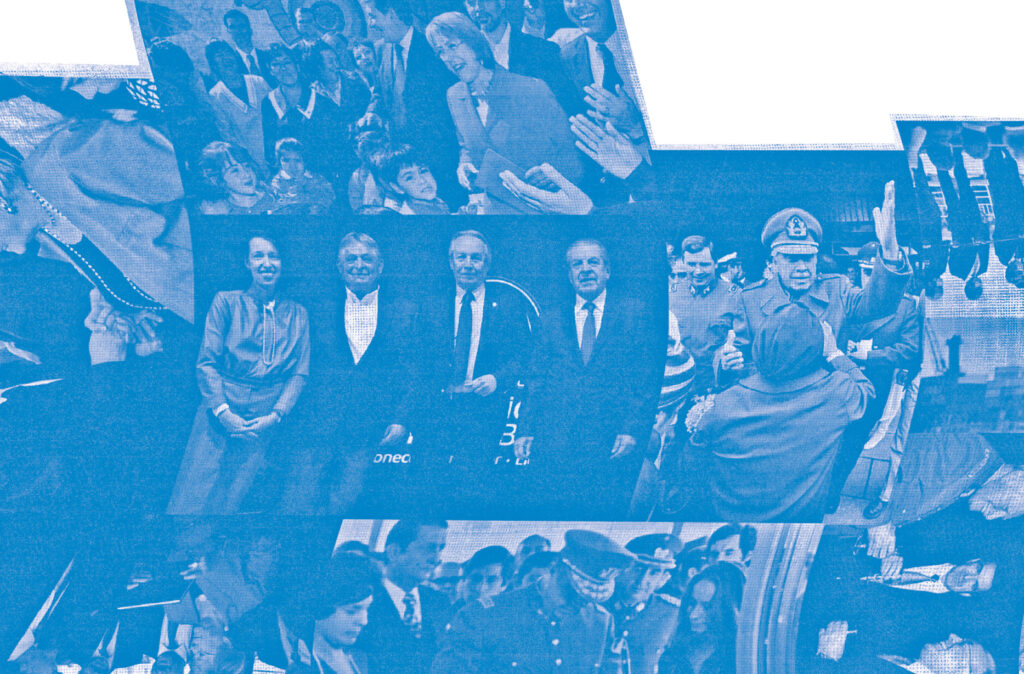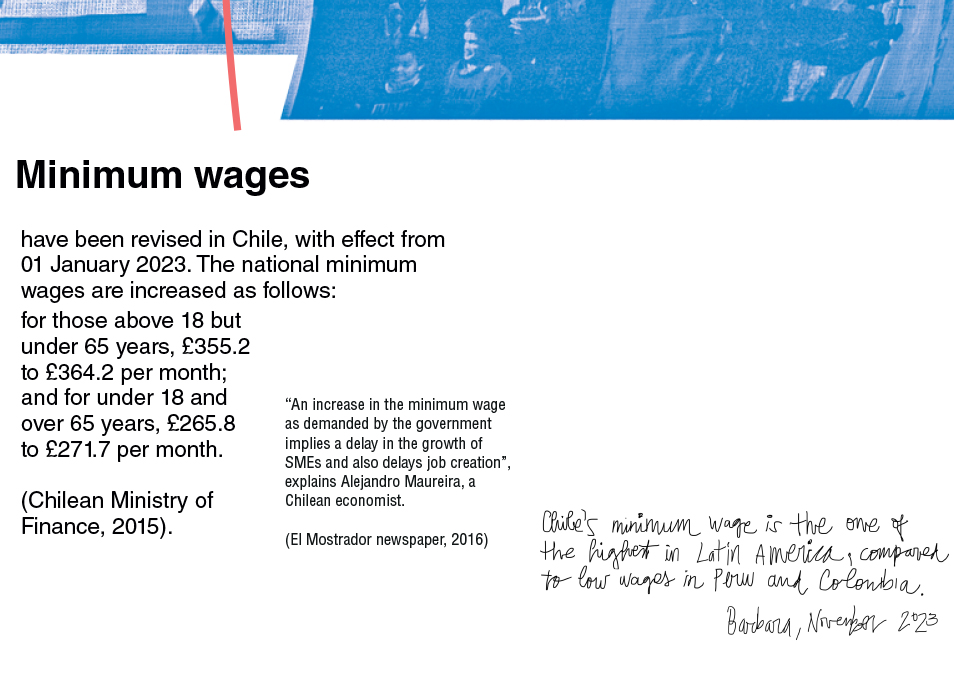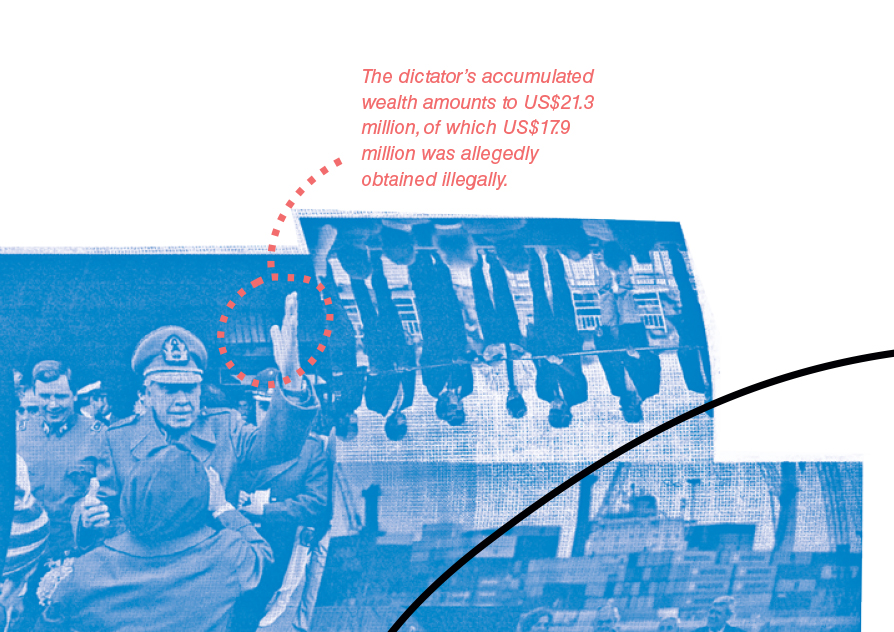Ribbon-cutting ceremonies are often held to mark the start of a project. These ceremonies allow politicians and leaders to showcase their power, promote economic growth and present an image of success. However, it is not all about economic growth and narratives of success.
This political collage reinterprets body gestures as re-presentations of the political discourse. Media amplification can manipulate narratives, leading to biases when reality diverges from the success portrayed. Images were chosen of Chilean presidents – and dictators – since 1970, in different ribbon cuts across Chile, presenting different political hand gestures as non-verbal cues within a persuasive discourse (Streeck, 2008). As a result, this exercise offers the opportunity for these stories to re-exist in new data, new ways of looking at old data and new alternative representations of that data (Hall and Davila, 2021).

Detail of the practice

Using photographic archives from the Chilean political context, new approaches to critical visualisation were explored, revealing narratives that had been silenced or omitted from official discourse. These narratives were presented through the experimental practice of collage. Multiple prints and scanning effects pixelated and distorted the images, using the aesthetics of xerographic copiers as a basis to reflect the aesthetics of 1970s and 1980s subcultural movements “adjusted to the lived and imagined margins of society” (Eichhorn, 2016, p. 150).

The use of annotation in this exercise is deployed as a critical artefact to highlight and expose the high levels of inequality in Chile along with all its associated conflicts. An annotation system was used in order to explore Kitchin’s (2016) categorisation of data sources and some visual principles of Drucker’s (2013) diagrammatic writing. The different data sources were examined through an official narrative of a social crisis provided by the government, an official narrative by media journalists, and a personal Twitter account (or X) of the same crisis from someone who experienced it first-hand. Textual arrangements were explored based on the primary aspects of diagrammatic writing, such as placement and relationship to other elements, as well as attributes such as framing.

References:
- Drucker, J. 2013. Diagrammatic writing. new formations. 78(78), pp.83-101. https://shorturl.at/ekyZ5
- Eichhorn, K. 2016. Adjusted margin: Xerography, art, and activism in the late twentieth century. MIT Press. https://shorturl.at/byCH2
- Hall, P.A. and Dávila, P. 2022. Critical Visualization: Rethinking the Representation of Data. Bloomsbury Publishing. https://shorturl.at/BHMRW
- Kitchin, R. 2016. Big Data. International Encyclopedia of Geography. pp.1-3. https://doi.org/10.1177/2043820613513388
- Streeck, J. 2008. Gesture in political communication: A case study of the democratic presidential candidates during the 2004 primary campaign. Research on Language and Social Interaction. 41(2), pp.154-186. https://doi.org/10.1080/08351810802028662